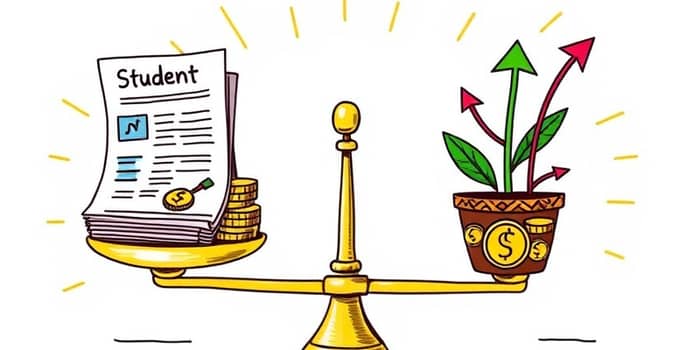
Balancing the demands of paying off student loans while beginning to invest can feel overwhelming. Yet, with a clear roadmap and practical strategies, you can tackle debt and build wealth simultaneously. This guide offers a detailed, step-by-step approach to help you balance debt and investment goals without sacrificing your financial peace of mind.
Before creating a plan, you need to know exactly what loans you have. Federal and private loans each come with unique terms and benefits. Federal loans offer several repayment plans that can adapt to your income, while private loans may provide lower interest rates through refinancing options. Knowing your options empowers you to choose the path that aligns with your long-term financial vision.
Key federal options include the Standard Repayment Plan, several Income-Driven Repayment (IDR) plans, Public Service Loan Forgiveness (PSLF), and Loan Consolidation. Standard plans carry fixed payments over ten years, typically resulting in the lowest total interest paid. IDR plans adjust your payment based on earnings and family size, sometimes extending to 20 or 25 years with potential forgiveness at the end. PSLF forgives remaining balances after 120 qualifying monthly payments in eligible public service roles, providing a lifeline for nonprofit employees and government workers. Consolidation can simplify multiple loans into one payment but may lengthen your repayment term, increasing interest costs.
Private refinancing is another tool. If you’ve improved your credit score or income, refinancing can lower interest rates and shorten your loan term. For example, refinancing a $50,000 balance from 8.5% over ten years to 6% over seven years could save around $13,000 in interest, although monthly payments may rise slightly.
Once you understand your loans, choose the approach that best suits your personality and finances. Two popular techniques are the Debt Avalanche and the Debt Snowball methods. Each has advantages and trade-offs, so pick the one that keeps you motivated and financially efficient.
While paying down debt typically offers a guaranteed return equivalent to your interest rate, investing provides potential for higher long-term growth. Even when you have loans, it pays to start early, thanks to the power of compound interest.
Deciding when to pay extra toward loans versus when to prioritise investments requires a clear framework. Factors such as interest rates, employer benefits, forgiveness eligibility, and personal goals all play a role. The table below summarizes various scenarios and recommended actions.
In general, if your effective loan interest rate is higher than your expected investment return, prioritize debt. If you’re receiving a match or eligible for forgiveness, channel extra dollars into investing and retirement savings. This dual approach ensures you’re working toward both goals concurrently.
Life events and long-term goals can influence your strategy. Planning for homeownership, for instance, may push you to lower your debt-to-income ratio by extending repayment or refinancing. Conversely, someone focused solely on career advancement in the public sector might target PSLF and deprioritize extra loan payments.
Don’t underestimate the psychological benefits of debt freedom. For many, the emotional relief of clearing all loans can outweigh purely mathematical optimization. Stay informed on evolving federal policies, as changes to IDR, forgiveness terms, or interest rate laws can reshape your strategy overnight.
To turn strategy into practice, leverage online calculators and planning tools. Measure your payoff timeline with repayment calculators, compare refinancing offers using rate comparison tools, and project long-term wealth accumulation through investment growth simulators. These resources provide clarity and help you adjust as life circumstances evolve.
Mapping out student loan repayment alongside investing doesn’t require choosing one over the other. By combining consistent debt reduction efforts with disciplined contributions toward retirement and brokerage accounts, you can leverage both strategies to secure your future. Remember to revisit your plan as rates change, new policies emerge, or your career path shifts.
Whether you’re tackling high-interest private loans or optimizing federal forgiveness programs, the key is to maintain balance. Stick to automated plans, reevaluate annually, and adjust your focus between debt paydown and investing based on your personal goals. With persistence and the right tools, you’ll not only eliminate your student loans but also build a robust financial foundation for decades to come.
References













